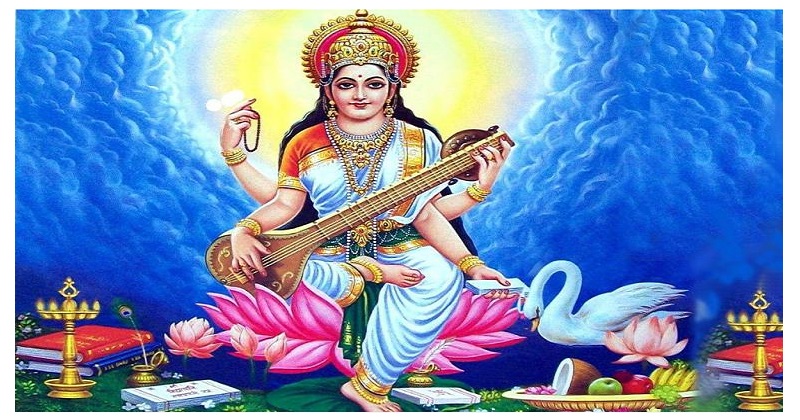
Saraswati Puja stands out as a profound celebration of wisdom, knowledge, and the arts in the rich tapestry of Hindu festivals. Held on Vasant Panchami, this festival honors Goddess Saraswati, revered as the fountainhead of wisdom, learning, music, and fine arts in Hinduism.
This article aims to provide an exhaustive exploration of Saraswati Puja, delving into its historical roots, cultural significance, and the diverse rituals and ceremonies that mark this auspicious day.
Our objective is to offer an inclusive guide that resonates with individuals interested in Hindu festivals and culture, practitioners of Hinduism, and anyone seeking to enrich their understanding of this vibrant tradition.
Table of Content
Historical Background
Saraswati Puja's origins can be traced back to ancient Hindu scriptures, where Goddess Saraswati embodies knowledge, intellect, and creativity. Celebrated on the fifth day (Panchami) of the Magha month in the Hindu calendar, which typically falls in January or February, Vasant Panchami heralds the arrival of spring.
This festival's historical significance is deeply intertwined with India's agricultural cycles. It symbolizes renewal, fertility, and growth physically, intellectually, and spiritually.
Cultural Significance and Religious Importance
Goddess Saraswati is a central figure in Hindu mythology, representing the endless flow of wisdom and consciousness. Worshiping Saraswati is believed to ignite the light of understanding and reason, guiding individuals toward enlightenment and educational prosperity.
Therefore, Saraswati Puja is a day of reverence for students, educators, artists, and scholars who seek blessings for academic success and artistic excellence.
Rituals and Ceremonies
Preparations and Offerings
The celebration of Saraswati Puja begins with the meticulous preparation of altars dedicated to the goddess. Devotees adorn these altars with yellow flowers, a color that signifies the vibrancy of life and the essence of Vasant Panchami.
Traditional offerings include books, musical instruments, manuscripts, and pens, placed at the altar as a sign of surrendering one's ego and seeking wisdom and creativity from the goddess.
Prayers and Recitations
The core of Saraswati Puja rituals involves mantra recitations and prayers that praise Goddess Saraswati's virtues. These prayers invoke the goddess's presence and seek her blessings for enlightenment and mastery over the arts.
Schools and educational institutions often organize special ceremonies where students participate in cultural performances and recite hymns in honor of Saraswati.
Cultural Events and Educational Activities
Saraswati Puja is also a day marked by cultural events and educational activities that showcase the rich heritage of arts and literature. Poetry readings, musical concerts, dance performances, and art exhibitions are commonly held to celebrate the goddess's influence on creativity and the arts.
Regional Variations in Celebrations
The observance of Saraswati Puja varies significantly across different regions of Nepal and India, each adding its unique flavor to the festivities. For instance, the day is marked by vibrant processions and the immersion of Saraswati idols in rivers.
It is also customary for young children to write their first letters on this auspicious day, signifying the beginning of their educational journey.
Impact on Education and the Arts
Saraswati Puja has a profound impact on education and the arts. It reminds us of the importance of knowledge and creativity in human development.
The festival encourages society to respect and uphold the value of learning and to recognize the transformative power of education and artistic expression.
Conclusion
Saraswati Puja embodies the essence of Hindu culture's reverence for knowledge and the arts. This festival celebrates the divine patron of learning. It encourages a deeper appreciation for the role of education and creativity in enriching human life. As we observe this auspicious day, let us renew our commitment to gaining wisdom and enlightenment inspired by Goddess Saraswati's eternal blessings.
FAQ about Saraswati Puja:
1. What is Saraswati Puja?
Saraswati Puja is a Hindu festival dedicated to Goddess Saraswati, the deity of wisdom, learning, music, and the arts. It is celebrated on Vasant Panchami, marking the beginning of spring.
2. When is Saraswati Puja celebrated?
It is celebrated on the 5th day of the lunar month (Hindu) of Magha, typically in late January or early February.
3. Why do we celebrate Saraswati Puja?
Saraswati Puja is celebrated to honor Goddess Saraswati and seek her blessings for enlightenment, educational success, and artistic excellence. It symbolizes the importance of knowledge and learning in life.
4. What are the key rituals of Saraswati Puja?
Key rituals consist of setting up an altar for Goddess Saraswati, offering yellow flowers, books, and musical instruments, and conducting prayers and hymn recitations dedicated to the goddess.
5. What is the significance of the yellow color in Saraswati Puja?
The yellow color, often seen in flowers and attire during Saraswati Puja, symbolizes the vibrancy of life, prosperity, and the spirit of spring.
6. Can anyone celebrate Saraswati Puja?
Yes, Saraswati Puja is celebrated by people of all ages, especially students, educators, artists, and scholars, regardless of their background. It's a universal celebration of knowledge and creativity.
7. How do educational institutions observe Saraswati Puja?
Schools and colleges often organize special ceremonies, including prayers, cultural performances, and educational activities, to mark the occasion and seek blessings for their students.
8. Are there any specific foods associated with Saraswati Puja?
While no specific food is mandated, many people prepare traditional sweets and vegetarian dishes to share with family and friends during the celebration.
9. What is the cultural impact of Saraswati Puja?
Saraswati Puja has a significant cultural impact. Through everyday rituals and celebrations, it promotes the values of learning and respect for the arts and fosters community spirit.
10. How can one participate in Saraswati Puja if unfamiliar with the rituals?
One can participate by attending public ceremonies, which often include cultural events, or by offering prayers and flowers in their personal space, reflecting on the value of wisdom and learning. Engaging with the community or visiting a Hindu temple during this time can also provide a meaningful way to partake in the festivities.
Festival




